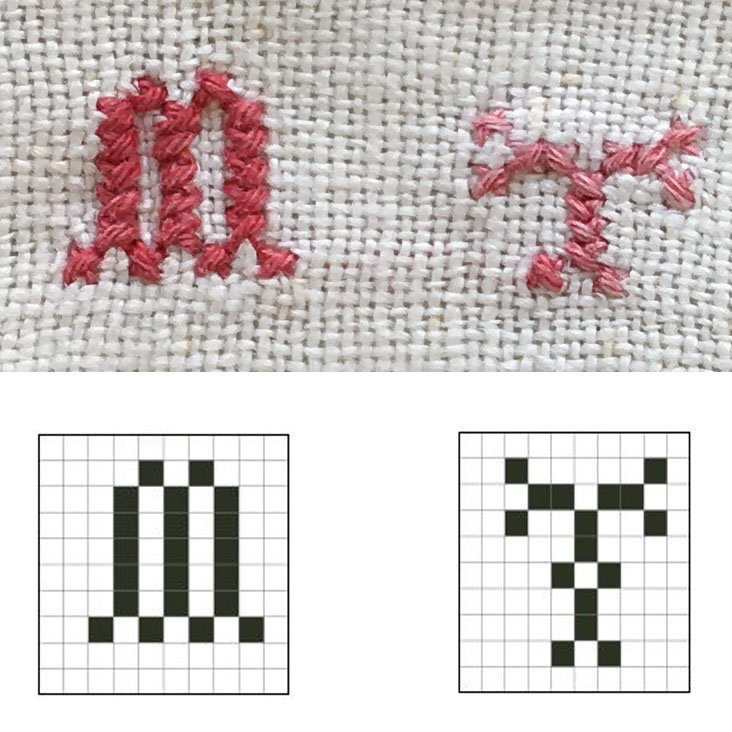
While cross stitch has been practiced for decorative purposes by virtually all civilizations around the world, it has had a very special role in France over many centuries.
Indeed, cross stitch, or "point de marque" as it was named, was used by linen maids, or the lady of the house herself, for identifying every item of household linen, a tradition that goes back centuries.
Right: initials on a towel, still in use in the 1890's , on a tea towel (private collection), and matching letters from Didierot's 18th century encyclopedia.
Cross stitch as described by the encyclopedists, in the Age of Enlightenment
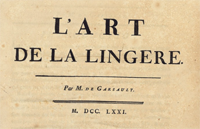
In the middle of the 18th century, historians and scientists set about listing human knowledge. In France, remarkably, we find a first description of cross stitch and its use, under the name "point de marque", in a book devoted to the Art of the linen maid, published in 1771 by François-Alexandre-Pierre de Garsault .
The book, part of a series describing many crafts of the time (Descriptions des Arts et Métiers) was commissionned by The Royal Academy of Science in Paris.
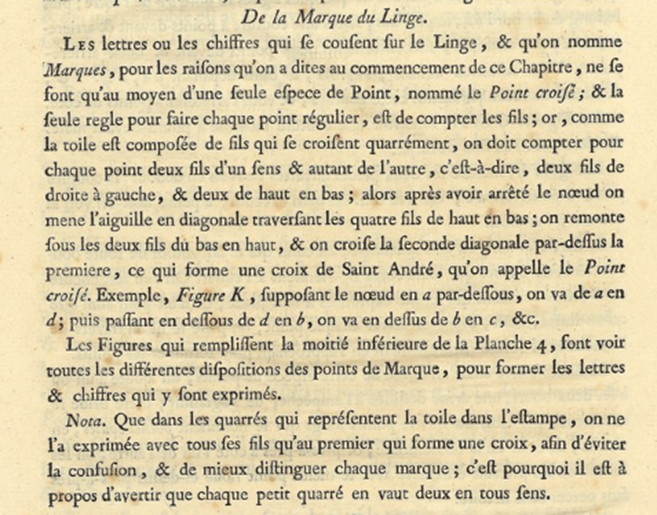
The author explains why cross stitch letters and numbers, marking of household linen, was necessary. Indeed at a time when laundry was an excrutiating chore, only carried out a few times a year, or handed out to washer ladies, households often possessed a dozen of each item, sheet, towel, shirt... Each item would bear the initials of its owner and a number for identification so they would be dispatched to their rightful owner when clean.
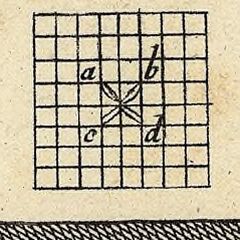
Marking the letters and numbers would be done by "stitching directly on the fabric, over two threads, using a single type of stitch "le point croisé" and the single rule for achieving regular stitches was to count the fabric threads".
The author, a man with no previous knowledge of needlework, describes with remarkable precision: "as the canvas is made up of threads that cross squarely, for each stitch we must count two threads in one direction and as many in the other, that is to say two threads from right to left and two threads & two from top to bottom"
As shown in the diagram:
“Supposing the knot below at a, we go from a to d; then passing from below d to b, we go above b to c, etc..."
On the last illustrative plate of the book, drawn by the author, is the complete series of cross stitch letters and numbers as commonly used by linenmaids.
Remarkably, this part of the plate would be reproduced in the exact same format in Diderot and d'Alembert major work, their Encyclopaedia.
The Linen maid's alphabet published in the plates of Diderot and d'Alembert's Encyclopaedia
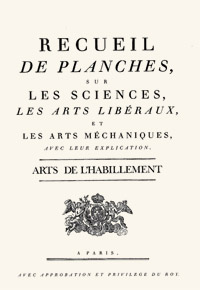
The Encyclopaedia or Dictionary of Sciences, Arts and Crafts was published in France from 1751 to 1780 under the direction of Denis Diderot and Jean Le Rond d'Alembert.
The Arts of Dressing section, features illustrative plates of related crafts and trades such as button maker, embroiderer, hatter, seamstress, embosser of fabrics, lacemaker, fan maker, linenmaid, fashion merchant, wigmaker, barber, feather dresser and tailor.
The plates devoted to the linenmaid show similar diagrams to the work of Mr. de Garsault,and end with the exact same chart providing templates for stitching Letters and Numbers on household linen.
This chart is known as the linen maid's alphabet.
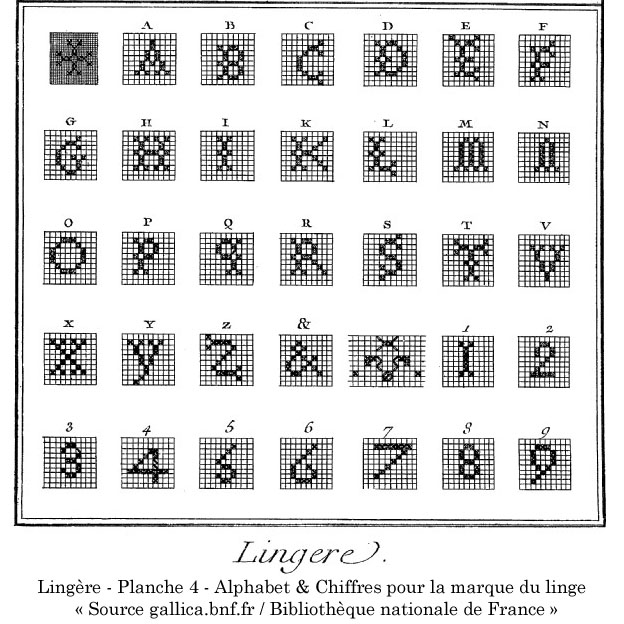
Comments regarding the
linen maid's alphabet : - the alphabet is preceded by a cross, the "croix de par Dieu". - Letters "I" and "J" as well as "U" and "V" are merged into a single letter. - Letter "W" has not yet entered the French alphabet - and won't be used until the 20th century. - The alphabet ends with an Ampersand, very commonly used in French writing at the time - although it is not in use in modern times. - "zero" is missing from the numbers |
Whereas the template for stitching Letters and Numbers had been transmited by knowledgeable women to daughters and apprentices, using fabric and thread, through centuries, the letters were now publicly and universally acknowledged.
You will notice that the letters do not align, with height varying from 7 to 9 stitches high. In particular letters "C", "E" and "S" have little flourishes making them taller than other characters. This was not a problem since letters were only stitched in pairs for initials, and the main goal was that they would be clearly identifiable.
The alphabet would continue to be used for identifying linen, practically unchanged, until the beginning of the 20th century in France. It would however gain other uses, firts as an introduction to needlework and practicing stitching letters, as well as used as ornamentation for more sophisticated samplers.
>> download a reproduction of the linen maid's alphabet chart
Sources:
l'Art de la lingère - François-Alexandre-Pierre de Garsault - 1771 BNF- Gallica
Encyclopédie ou Dictionnaire raisonné des sciences, des arts et des métiers / Arts de l'habillement/ La lingère - Denis Diderot et Jean Le Rond d'Alembert - 1751-1780 BNF - Gallica